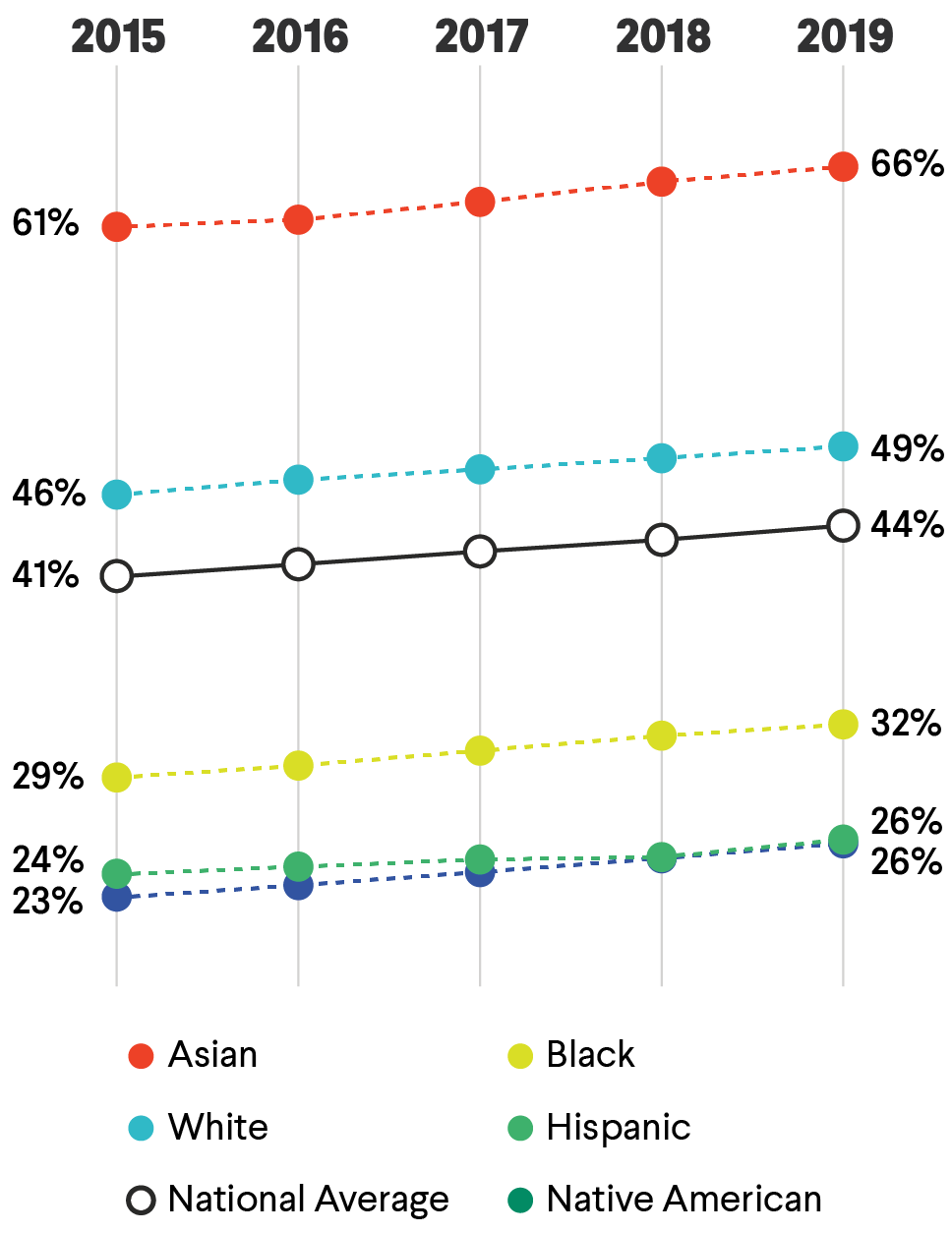Incentives
Incentives for new financing and accountability systems
This paper argues for a radical restructuring of education for grades 11–14—by erasing the arbitrary dividing line between high school and college—to open opportunities for the learners our current systems leave behind.
We make the case for an entirely new type of institution—neither high school nor college—designed specifically to better meet the needs of young people after 10th grade and help prepare them to succeed in the world of work.

They are misaligned—with incompatible expectations, governing policies, and funding streams—and onerous for most students to navigate. They work better for people who are financially secure and well connected, but not well enough for the majority of young people across the country.
It’s time to stop tinkering and radically restructure grades 11 through 14—the last two years of high school and the first two years of college. Only by undertaking such an overhaul can we ensure that all young people will be able to access the knowledge, skills, credentials, and social capital they need to launch careers and realize their best possible futures.
 High School
High SchoolUp to 20% of high school students—including up to 40% of students from low-income households—are admitted and plan to attend college, but don’t show up for classes in the fall.
 Postsecondary
Postsecondary25% of first-year students do not return to college for their second year, including 34% of Black students and 28% of Hispanic students.
 Jobs and Career
Jobs and CareerStudents from low-income households and Black students are more likely to take out student loans, to borrow larger sums of money, and to default on their loans. 70% of Black students default on loans, compared to 4% of white students.
Our solution—which we call “The Big Blur”—erases the arbitrary dividing line between high school and college and creates new structures and systems that would better serve 16-to-20-year-olds.
These new structures would be neither high schools nor community colleges, but entirely new configurations that open the opportunity for all students to start on a path toward a postsecondary credential and prepare for a career—free of charge. Every student’s experience would include labor-market-aligned sequences of work-based learning that culminate in credentials that give participants direct access to high-value careers and/or further postsecondary education.
This new vision for grades 11 through 14 positions young people for postsecondary success by eliminating the need for students to chart their own courses through unfamiliar territory and overcoming all of the hurdles involved in applying to, getting into, and completing college. Early and frequent career-connected work experiences would give students a stronger path toward employment and advancement. This system redesign would create more efficient and transparent processes and promote more equitable outcomes for all young people, bolstering our nation’s economic strength and security.
A high school diploma is no longer a ticket to jobs that pay family-supporting wages and offer benefits and opportunities for growth. In our evolving economy, it is becoming increasingly important for workers to earn postsecondary credentials in order to have a chance at economic advancement. But college completion rates are increasing by only 1 percent per year on average, and that figure is even lower for students from low-income backgrounds and Black, Native American, and Latinx students. By the age of 16 or 17, many young people have already assumed adult responsibilities in their families and are poised to start preparing for their future careers.
To better understand how to transform our fragmented systems and improve student educational and economic outcomes, JFF interviewed more than 50 leaders in the fields of education and workforce development, including many who are driving innovative initiatives to increase college completion rates and improve learners’ prospects for career success. Their efforts involve strategies to reorganize support systems, instructional delivery, credit-earning options, financing, guidance, and work-based learning across the boundaries of compulsory K-12 education and elective postsecondary studies.
However, as innovative and effective as many of these strategies may be, they have hardly made a dent in the typical student experience of the transition from high school to college and careers. And they involve the use of extensive resources to overcome the inefficient disjunction between systems. While many have made meaningful changes in the lives of their participants, none has achieved impact at scale, and the innovators we interviewed agree: It is time for a bold new systemic approach.

Values above do not include short-term credentials, only achievement of an associate’s degree or higher.
Fulfilling this vision will require embracing the viewpoint that providing two years of career-connected college education to every young person is not just a public good but a public responsibility. It will also require seismic shifts in our existing systems. These include:

Incentives for new financing and accountability systems

Closer alignment between high schools, colleges, and labor markets

Stronger approaches that provide decision-making authority

Staffing models that are specially designed for these new institutions
As far-fetched as our vision may sound, we see some states already taking significant steps in these directions, and we highlight those initiatives in this paper as efforts worth watching.
Ultimately, however, we need to accelerate the systemic renewal we need. This paper concludes with recommendations of ways to promote the argument for a new grade 11-14 system, catalyze change, and build public will to move forward. Our country urgently needs a better education-to-workforce system, and leaders have an obligation to create new models that will ensure that young people can truly prosper.

IMPACT STORY
Reforming math in Florida, ensuring equity in Washington, boosting student support in Michigan, partnering with the workforce system in New Jersey—JFF’s renowned network advances policies and practices that help all students attain high-value credentials.
Read More

IMPACT STORY
JFF’s policy team offers fresh ideas on education, poverty alleviation, and workforce issues that prepare students and workers for the jobs of the future and boost our nation's economy.
Read More

IMPACT STORY
This tried-and-true training model has been around for so long because it works. JFF is a leader in expanding apprenticeship and work-based learning to new industries and professions.

IMPACT STORY
We are boldly reimagining how U.S. education and workforce systems meet state and regional talent needs and prepare young people for careers.

IMPACT STORY
Impact Employers take a fundamentally different approach to attracting, developing, and retaining talent—they prioritize the social and economic well-being of employees. This strategy is good not only for workers and communities; it’s good for your company’s bottom line.